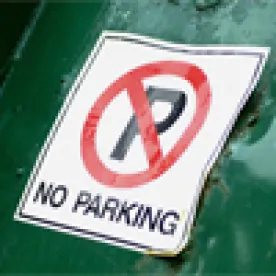In a combined opinion, the US Court of Appeals for the Federal Circuit addressed appeals from district court grants of summary judgment over two patents, and an appeal from the Patent Trial and Appeal Board (PTAB) that one of the patents’ claims were not shown to be unpatentable as anticipated under 35 USC § 102(e). Duncan Parking Techs., Inc. v. IPS Grp., Inc., Case Nos. 18-1205, -1360 (Fed. Cir. Jan. 31, 2019) (Lourie, J).
IPS designs parking meter technology and owns a patent directed to a credit-card-enabled, solar-powered, single-space parking meter than can be used to retrofit existing parking meters, and a later-filed patent directed to a credit-card-enabled solar-powered, single-space parking meter. The earlier-filed patent named King and Schwarz as inventors, and the later-filed patent named King, Hunter, Hall and Jones as inventors.
IPS filed a complaint against Duncan Parking Technologies (DPT) asserting infringement of both patents. The district court granted DPT’s motion for summary judgment that the accused product did not infringe certain claims of the asserted patents. Specifically, the court found that the accused product did not infringe the claims of the later-filed patent because the accused product’s cover panel, which the court construed to mean “upper structural component of the exterior casing,” did not include a plurality of buttons as required by the claims, since the accused product’s buttons were part of the parking meter itself and protruded through an opening in the casing. The district court also found that the accused product did not infringe the earlier-filed patent because the accused product’s keypad extended through an opening in the lower portion of the housing, and as a result, the lower portion of the accused product was not receivable within its housing base as required by the claims.
Shortly after IPS filed its complaint, DPT filed a petition for inter partes review arguing that the earlier-filed patent anticipated the later-filed patent under 35 USC 102(e). Instead of disputing the merits of the anticipation argument, IPS argued that the anticipating portions of the earlier-filed patent were solely attributable to King and were therefore not the disclosure “of another” under § 102(e), and thus could not be applied as prior art against the claims of the later-filed patent. DPT argued that the earlier-filed disclosure was prior art because Schwarz conceived at least a portion of the anticipating disclosure. The PTAB ultimately found that King was the sole inventor of the anticipating disclosure of the earlier-filed patent, and concluded that the challenged claims of the later-filed patent were not anticipated by the earlier-filed patent disclosure since DPT’s anticipation argument relied solely on portions that were the work of King alone. DPT appealed the PTAB’s patentability finding, and IPS appealed the district court’s non-infringement finding.
The Federal Circuit reversed the PTAB’s patentability decision. The Court explained that to be a joint inventor, one must (1) contribute in some significant manner to the conception or reduction to practice of the invention; (2) make a contribution to the claimed invention that is not insignificant in quality, when that contribution is measured against the dimension of the full invention; and (3) do more than merely explain to the real inventors well-known concepts and/or the current state of the art. The Court found that the evidence clearly demonstrated that Schwarz conceived much of the disclosure of the earlier-filed patent’s electrical system, including “how the various electrical components of the meter are interconnected and operate together.” Therefore, the earlier-filed patent’s anticipating disclosure was “by another,” and the later-filed patent was unpatentable under § 102(e)(2).
Turning to the district court’s summary judgment finding, the Federal Circuit affirmed the non-infringement ruling relating to the later-filed patent, explaining that the claims of that patent fundamentally distinguished the housing from the device and that the accused product did not infringe either literally or under the doctrine of equivalents. The Court however reversed the district court’s decision relating to the earlier-filed patent, finding that the district court erred in construing the term “receivable within” because it was contrary to the plain and ordinary meaning of the term and further excluded the preferred embodiment. The Court therefore vacated the summary judgment decision for the earlier-filed patent and remanded the case to the district court for further proceedings.



 />i
/>i

